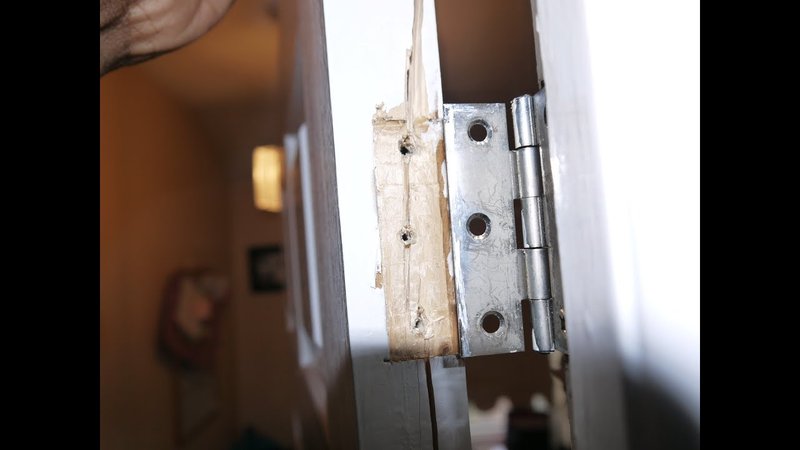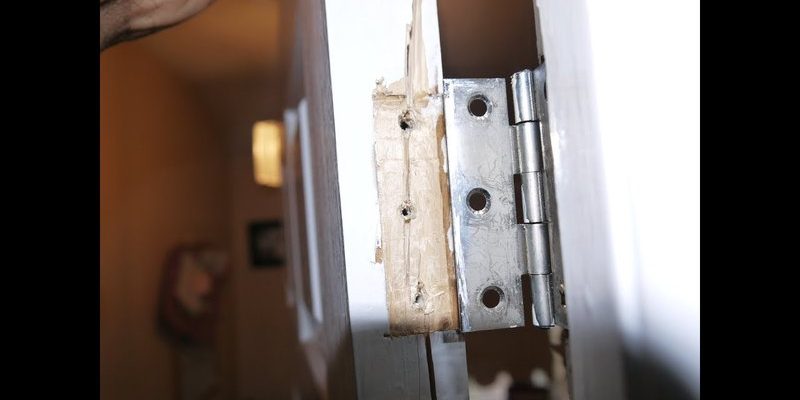
Think of a door hinge as the backbone of your door. It allows it to swing open and shut smoothly. When it breaks, often all that’s needed is a little creativity and resourcefulness to get it back in action. There are several temporary fixes you can try before you rush to the hardware store. Let’s explore some of the best options to keep your door functional while you figure out a long-term solution.
Understanding the Problem: Why Door Hinges Break
Door hinges can malfunction for many reasons. Sometimes, they get rusty, or the screws can become loose from repeated use. Other times, the weight of the door itself is just too heavy for the hinge to handle, especially if it’s a solid wood door. Over time, minor wear and tear can lead to major issues. That’s why addressing a broken hinge quickly is key.
You might be wondering what happens if you ignore a broken hinge. Well, a door that doesn’t swing properly can lead to more significant structural damage, like cracked door frames or even making it harder to lock your door. After all, a door that doesn’t close is like a car with a flat tire—it just doesn’t work as it should.
Identify the Type of Hinge
Before you jump into fixes, take a moment to analyze the type of hinge you have. Most interior doors feature either a *butt hinge* or a *piano hinge*.
– Butt Hinges: These are the most common. They’re typically made of two plates that fit into a mortise in the door and frame. If these break, you can often temporarily fix them by tightening screws or using washers.
– Piano Hinges: Found on longer doors or lids, these hinges run the entire length of the door. A break here is a bit more complex but can often be mended with a sturdy clamp or some creative reinforcements.
Knowing what type of hinge you’re dealing with can help you determine the best temporary fix.
Using Wood Glue for Quick Fixes
Wood glue can be a lifesaver for a broken hinge. It’s best used for small cracks or when the wood has split around the hinge. Here’s a quick step-by-step:
1. Clean the Area: Make sure there’s no dust or debris. A clean surface helps the glue bond better.
2. Apply Wood Glue: Squeeze a small amount into the crack or around the hinge.
3. Clamp It Down: Use a clamp to hold it in place for a few hours while it dries. If you don’t have a clamp, you can use heavy books as a weight.
Once it’s dry, reattach the hinge to the door. This isn’t a permanent solution, but it can get you through until you find a more robust repair option.
Using Washers for Added Support
Sometimes, the screws attached to your hinge become loose. Instead of replacing the hinge entirely, consider using washers. Here’s how you can do this:
1. Remove the Hinge: Unscrew the hinge from the door or frame.
2. Choose the Right Washers: Find washers that fit snugly over the screws. You want them to fit between the hinge and the door.
3. Reattach the Hinge: Place the washers over the screws and then screw the hinge back into the door.
By adding these washers, you’re essentially giving the screws more grip. This is especially helpful if the wood around the hinges is worn out.
Tightening Screws: A Simple Fix
If your door is sagging, sometimes all that’s needed is a good old-fashioned tightening of screws. Here’s a quick guide to do it:
1. Gather Your Tools: You’ll need a screwdriver that fits the screws in your hinge.
2. Check Each Screw: Go through each screw and see if they’re loose. A little wiggle can go a long way.
3. Tighten Where Needed: Use your screwdriver to carefully tighten any loose screws. Be careful not to over-torque, which might strip the wood.
This straightforward fix can solve a lot of problems, making it a go-to first step when dealing with a hinge issue.
Making Temporary Reinforcements with Tape
In a pinch, clear tape or duct tape can help stabilize a broken hinge. It’s not the most sophisticated method, but it’s effective for a quick fix. Here’s what to do:
1. Wrap the Hinge: Use tape to wrap around the hinge and the door frame.
2. Secure Loose Parts: If part of the hinge is detached, tape it down as much as possible.
3. Limit Movement: Remember, this isn’t a permanent fix, so limit how often you open and close the door.
This method works best for light doors that you don’t need to use frequently. Think of it as a band-aid for your door hinge until you can implement a more lasting solution.
So, there you have it! A few effective temporary fixes for a broken interior door hinge. From using wood glue and washers to tightening screws and even using tape, these methods can help you get by until you figure out a long-term solution.
However, remember that these fixes are just that—temporary. If you find yourself repeatedly fixing the same hinge or if the issue keeps coming back, it might be worth calling a professional. Sometimes, it’s better to invest in a proper repair than to continually bandage a problem.
Door hinges play a vital role in your home’s functionality and security, so keeping them in good shape matters. With these tips, you can tackle a broken hinge head-on, ensuring your door swings smoothly while you plan for the future.
